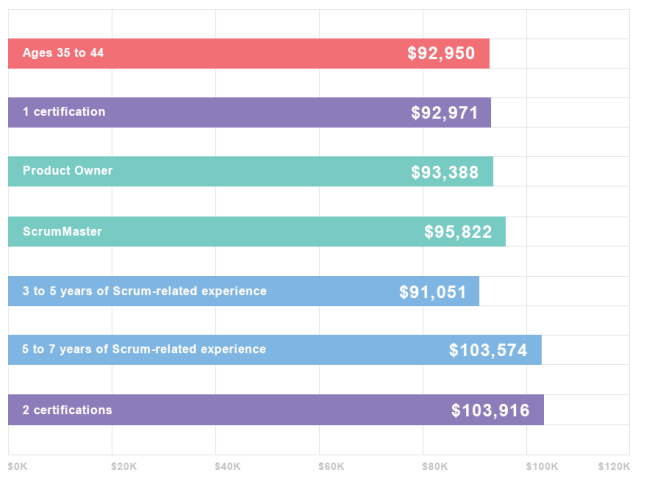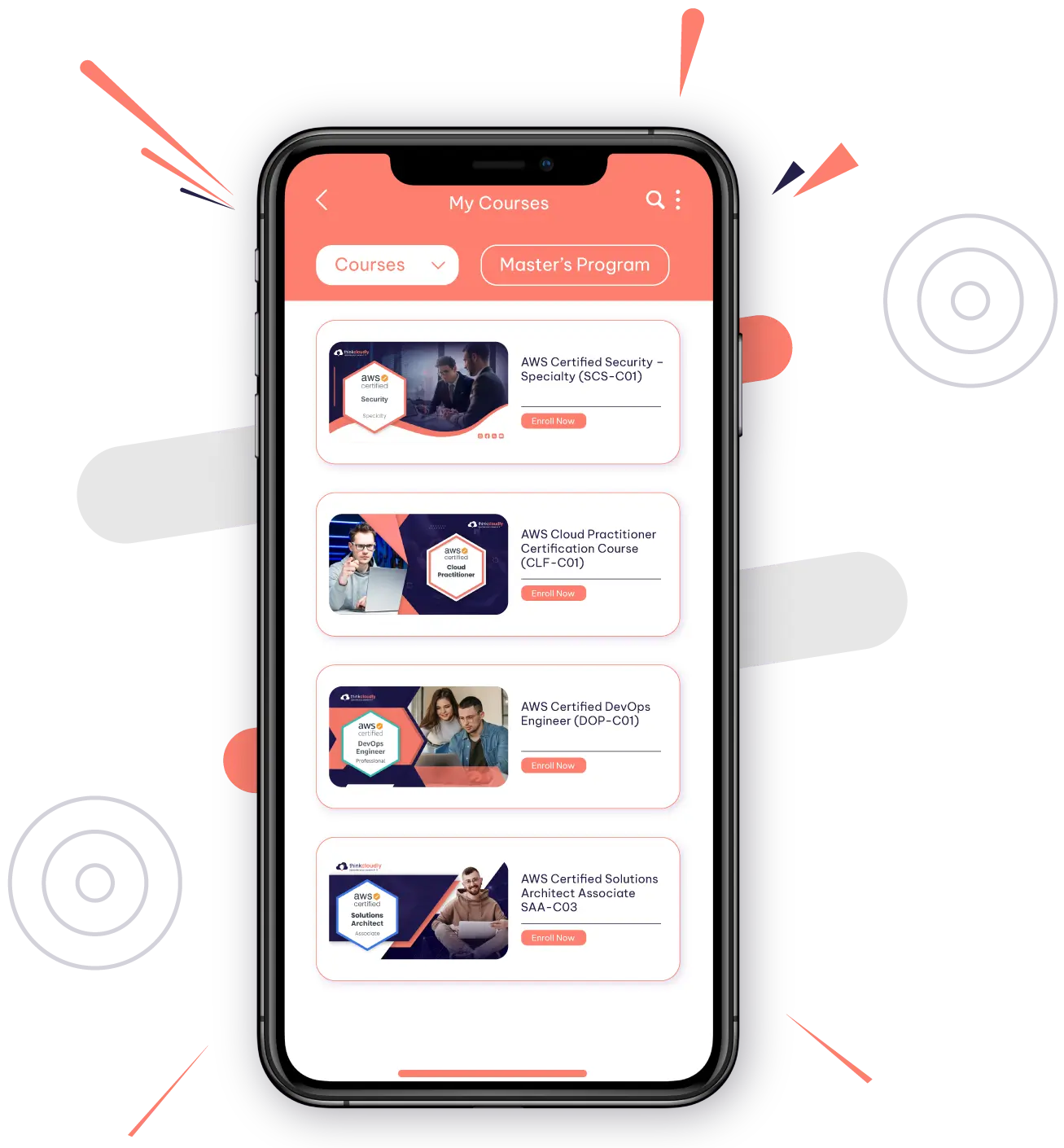Success in today’s rapidly evolving business landscape requires adaptability, collaboration, and efficiency. In this pursuit, the role of a Scrum Master has emerged as a powerful catalyst for successful project management and product development. As Margaret Mead once said, ‘Never doubt that a small group of thoughtful, committed people can change the world. Indeed, it is the only thing that ever has.’certi
Welcome to our blog, where we’ll take you on an exciting ride into the world of Scrum Master certifications. We’ll explore interesting facts, different job roles, and the attractive salary range that awaits certified Scrum Masters. Embracing Agile methodologies, a Scrum Master leads the way in innovation, guiding teams to reach their fullest potential and achieve remarkable results.
So, let’s get started with the learnings!
Why Scrum?
Scrum has revolutionized project management and software development, gaining widespread popularity for its effectiveness and adaptability. One of its core strengths lies in its ability to embrace change seamlessly. In today’s fast-paced business environment, requirements are continually evolving. Scrum’s iterative approach, with short development cycles known as “sprints,” allows teams to respond quickly to changing needs. This agility enables organizations to stay ahead of the curve and deliver products that meet the latest market demands.
Moreover, Scrum’s customer-centric approach ensures that the end product aligns closely with customer expectations. Regular feedback and collaboration with stakeholders throughout the development process enable Scrum teams to deliver a valuable and relevant product. By engaging customers at every step, teams can validate their assumptions and course-correct if needed, ultimately leading to higher customer satisfaction.
Another key aspect of Scrum is its focus on empowering teams. Scrum encourages self-organization, enabling team members to take ownership of their work and collaborate effectively. Cross-functional teams work closely together, breaking down silos and leveraging their collective skills to solve challenges. This sense of ownership and collaboration boosts team morale and productivity, fostering a positive work environment.
The heart of Scrum lies in its commitment to continuous improvement. After each sprint, teams hold retrospectives to reflect on their performance and identify areas for enhancement. This introspection drives a culture of learning and innovation, leading to refined processes and better outcomes with each iteration.
Scrum’s incremental delivery approach also brings the advantage of faster time-to-market. By delivering functional increments at the end of each sprint, stakeholders can see tangible progress early on, and organizations can respond to market demands more swiftly. This ability to release products sooner can offer a competitive edge in the market, leading to increased customer loyalty and business success.
Transparency is another essential principle of Scrum. Regular meetings, such as daily stand-ups, sprint reviews, and sprint planning, ensure that all team members and stakeholders have visibility into the project’s progress. This open communication fosters trust and collaboration among team members and stakeholders, aligning everyone towards the project’s goals.
Scrum’s focus on risk mitigation sets it apart from traditional project management approaches. Through frequent inspections and adaptations, Scrum teams can identify and address potential risks early on, reducing the likelihood of costly surprises later in the project. This proactive risk management ensures smoother project execution and successful outcomes.
Scrum’s adaptability, customer focus, empowered teams, continuous improvement culture, faster time-to-market, transparency, and risk mitigation make it a highly attractive and effective framework for project management and software development. Embracing Scrum can drive organizations towards greater success, enhanced collaboration, and a customer-centric approach, ultimately leading to higher customer satisfaction and improved business performance.
Facts About Scrum
- Spotify’s Success Story: One of the most well-known examples of Scrum’s success is how Spotify, the popular music streaming platform, used Scrum to transform its development process. In the early stages, Spotify faced challenges in coordinating its teams and releasing new features rapidly. By adopting Scrum, they restructured their organization into cross-functional teams called “Squads” and implemented regular sprint cycles. This Agile transformation allowed them to accelerate product development, improve collaboration, and deliver continuous updates to their users, contributing significantly to their rapid growth and success in the music streaming industry.
- Scrum in Formula 1 Racing: Scrum’s principles are not limited to software development; they have also found success in other industries, including Formula 1 racing. McLaren Racing, a renowned Formula 1 team, adopted Scrum practices to optimize their car development process. By organizing their engineering teams into smaller, more flexible groups and following sprint cycles, they improved their efficiency in designing and testing car components. This Agile approach allowed them to deliver design updates faster and respond quickly to changes on the race track, gaining a competitive edge over their rivals.
- Scrum for Disaster Relief: Scrum’s adaptability and rapid response capabilities have proven invaluable in disaster relief efforts. Humanitarian organizations like the Red Cross have used Scrum principles to coordinate their disaster response teams effectively. Scrum’s iterative approach allows them to assess and prioritize needs continuously, allocate resources efficiently, and adapt their strategies in real time as the situation evolves. By leveraging Scrum, these organizations can provide timely aid to affected communities and improve the overall effectiveness of their relief efforts.
Job Roles After Scrum Master Certification
After obtaining a Scrum Master certification, professionals open the doors to various exciting job roles in the realm of Agile Project management and software development. Some of the key job roles that become accessible with a Scrum Master certification include:
- Scrum Master: As the most direct and common career path, a Scrum Master takes on the role of a facilitator and servant leader for Agile teams. They ensure the effective implementation of Scrum principles, guide team members through sprints, remove impediments, and promote collaboration to deliver successful projects.
- Agile Coach: With a Scrum Master certification, professionals can step into the role of an Agile Coach. In this position, they support multiple teams and help organizations transition to Agile methodologies. Agile Coaches provide training, mentorship, and guidance to teams and stakeholders, fostering a culture of continuous improvement and Agile adoption.
- Product Owner: Some Scrum Master-certified professionals transition to the role of a Product Owner. In this capacity, they become responsible for defining and prioritizing the product backlog, representing customer needs, and maximizing the value of the product delivered by the Scrum team.
- Project Manager: Scrum Master certification can serve as a stepping stone to a Project Manager role. With their understanding of Agile principles and team dynamics, Scrum Masters can lead and manage projects, ensuring their successful delivery while adapting to changing requirements.
- Agile Project Manager: Combining traditional project management skills with Agile expertise, Agile Project Managers oversee projects using Agile methodologies. They provide direction, and support, and ensure alignment with Agile frameworks to deliver projects efficiently.
- Scrum Trainer/Consultant: Scrum Masters can leverage their certification to become Scrum Trainers or Consultants. They impart their knowledge and experience to individuals and organizations seeking to adopt Scrum, helping them understand the framework’s principles and best practices.
- Agile Transformation Lead: With their understanding of Agile frameworks and change management, Scrum Master-certified professionals can lead and drive organizational Agile transformations. They guide organizations through the process of adopting Agile methodologies and foster a culture of continuous improvement and collaboration.
These job roles highlight the diverse and rewarding career opportunities that open up after obtaining a Scrum Master certification. Whether guiding teams, coaching stakeholders, or driving organizational change, Scrum Master-certified professionals play a crucial role in shaping the future of Agile Project Management and software development.
Salary After Scrum Master Certification
The salary of a Scrum Master after certification can vary depending on factors such as experience, location, industry, company size, and demand for Agile professionals. On average, Scrum Masters with certification tend to earn competitive salaries due to the high demand for their expertise. Here is a general overview of Scrum Master salaries:

- Entry-Level Scrum Master: In the early stages of their career, Scrum Masters with minimal experience may earn an average annual salary ranging from $60,000 to $80,000.
- Mid-Level Scrum Master: Scrum Masters with a few years of experience and certification can expect to earn a higher salary, typically ranging from $80,000 to $100,000 per year.
- Senior Scrum Master: With extensive experience and a proven track record of successful projects, Senior Scrum Masters can command salaries ranging from $100,000 to $130,000 or more annually.
Proof of High Salary After Scrum Master Certification
- “Scrum Master Salary Report” by Scrum.org: The average salary of the participants in the survey is US-$80,995, with a standard deviation of about US-$53,700.
- “Annual State of Agile Report” by VersionOne: The Scaled Agile Framework® (SAFe®) is reported as the most widely-used approach to scaling agile, with nearly 1/3 (29%) saying that SAFe is the method they “follow most closely”. The scaling approach that saw the largest increase in reported use since last year is the Disciplined Agile Framework (DA), up from 1% in 2016 to 5% in this year’s survey.

- Agile/Scrum Salaries and Roles Report” by Agile Alliance: In the United States, a job search for “ScrumMaster” turns up over 22,000 matches on Glassdoor, just under 5,000 on LinkedIn, nearly 6,000 on Indeed and over 400 on a worldwide search from Monster.
Conclusion
crum Master certification opens doors to diverse job roles, competitive salaries, and impactful careers in Agile project management. With its adaptability and customer-centric approach, Scrum continues to drive success in various industries. Embrace the journey, unleash your potential, and thrive in the exciting world of Scrum!












No comment yet, add your voice below!